Top 10 Greatest Painters of All Time
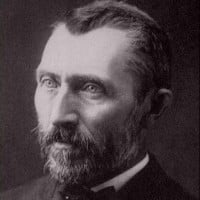 Vincent van Gogh was a Dutch Post-Impressionist painter who lived from 1853 to 1890. Known for his bold use of color and emotive brushwork, he created over 2,000 artworks in a single decade, but achieved fame only after his death. Notable works include "Starry Night," "Sunflowers," and "The Bedroom."
Vincent van Gogh was a Dutch Post-Impressionist painter who lived from 1853 to 1890. Known for his bold use of color and emotive brushwork, he created over 2,000 artworks in a single decade, but achieved fame only after his death. Notable works include "Starry Night," "Sunflowers," and "The Bedroom." "Van Gogh is the finest painter of them all. Certainly, the most popular great painter of all time. The most beloved. His command of colour, the most magnificent. He transformed the pain of his tormented life into ecstatic beauty. Pain is easy to portray, but to use your passion and pain to portray the ecstasy and joy and magnificence of our world. No one had ever done it before. Perhaps no one ever will again. To my mind, that strange, wild man who roamed the fields of Provence was not only the world's greatest artist, but also one of the greatest men who ever lived."
(from the Doctor Who episode Vincent and the Doctor)
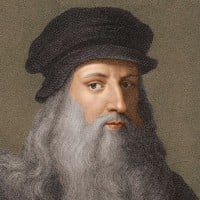 Leonardo da Vinci was a polymath and artist who lived in Italy during the Renaissance period. His contributions to art include masterpieces like "The Mona Lisa" and "The Last Supper." Da Vinci was not just an artist but also made significant contributions to fields like anatomy, engineering, and hydraulics.
Leonardo da Vinci was a polymath and artist who lived in Italy during the Renaissance period. His contributions to art include masterpieces like "The Mona Lisa" and "The Last Supper." Da Vinci was not just an artist but also made significant contributions to fields like anatomy, engineering, and hydraulics. Van Gogh is great, but Da Vinci was phenomenal. He had technique, advanced shading, unique sketching, and his overall painting was one of a kind. He's the best.
A pioneer and a mentor for all painters past his time. Without Leo, painting and all art would be 500 years behind.
The man was way ahead of his time!
He was living in the future while the other were living in the Renaissance!
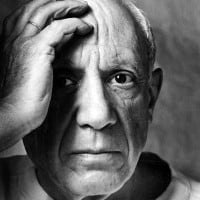 Pablo Picasso, a Spanish painter and sculptor, is best known for co-founding the Cubist movement. Born in 1881, his prolific career spanned several artistic styles, including surrealism and symbolism. Iconic works include "Guernica," a commentary on the Spanish Civil War, and "Les Demoiselles d'Avignon."
Pablo Picasso, a Spanish painter and sculptor, is best known for co-founding the Cubist movement. Born in 1881, his prolific career spanned several artistic styles, including surrealism and symbolism. Iconic works include "Guernica," a commentary on the Spanish Civil War, and "Les Demoiselles d'Avignon." Love as well how abstract the art is it still leaves more wanting from attention as a real cool different view point. Has much to offer and to notice the technique hold true and reinvent itself is what in truth lifts out ahead as Pablo Picasso being one if not best painter tobadd that new dimension in visual art. A perfect contribution that begs the viewer it is plain to sight a future is to behold with it. Nice work!
Pablo Picasso's artwork is magnificent. Many people think he just scribbled on some paper or a canvas but it actually takes time to make abstract art like his. And it is a lot more creative and interesting than a painting with an predictable and obvious storyline to it.
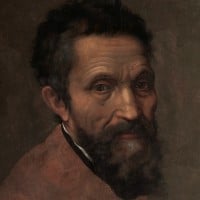 Michelangelo was an Italian Renaissance sculptor, painter, and architect born in 1475. He is most renowned for works such as the Sistine Chapel ceiling and the marble sculpture of David. Michelangelo's influence is so profound that he is often considered one of the greatest artists of all time.
Michelangelo was an Italian Renaissance sculptor, painter, and architect born in 1475. He is most renowned for works such as the Sistine Chapel ceiling and the marble sculpture of David. Michelangelo's influence is so profound that he is often considered one of the greatest artists of all time. As one of the best painters would not expect in least for some sort ofmtrade to have taken place. The extenct to disfigurement for a job well done is noticeable. When beautiful things become seen as monstrous it is a pity, however this is an art Michelangelo became a master at, so nothing that much to be so sad about...one would suppose. Good portfolio as well.
Despite being an arrogant douche, he's one of the greatest painters of all time! If not for his attitude, then I might've actually put him number 2 in my list of the greatest painters of all time, only second to Da Vinci!
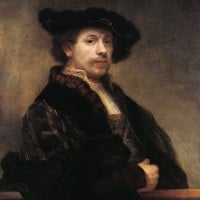 Rembrandt, a 17th-century Dutch painter, was a leading figure in the Dutch Golden Age. Known for his mastery of light and shadow, his most famous works include "The Night Watch" and a series of self-portraits. His innovative techniques had a lasting impact on art history.
Rembrandt, a 17th-century Dutch painter, was a leading figure in the Dutch Golden Age. Known for his mastery of light and shadow, his most famous works include "The Night Watch" and a series of self-portraits. His innovative techniques had a lasting impact on art history. Rembrandt could do it all! Very smooth and finely wrought portraits to heavy impasto and sweeping brushstrokes that are a precursor to the Impressionists. He is unwavering in his study of human emotion and human expression. I believe that Rembrandt was the master of light and shadow--chiaroscuro--that draws us in and makes us look for the source of light. Like Beethoven, he took the tragedy in his life and made it art.
There's something wrong about this list. Unlike bands, songs, or even poets, most people know the name of just 4-5 painters (mostly the first 5 items on this list). Rembrandt's name is very widely known but otherwise I don't see so much special in him. He even lacks a recognisable style, check out any other baroque artists.
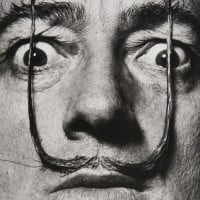 Salvador Dali, born in 1904 in Spain, was a surrealist artist known for his imaginative, eccentric creations. He is perhaps most famous for his painting "The Persistence of Memory," featuring melting clocks. Dali's work often incorporated dream-like landscapes and bizarre, distorted depictions of reality.
Salvador Dali, born in 1904 in Spain, was a surrealist artist known for his imaginative, eccentric creations. He is perhaps most famous for his painting "The Persistence of Memory," featuring melting clocks. Dali's work often incorporated dream-like landscapes and bizarre, distorted depictions of reality. I adore his work. I really do. It's amazing.
His art is one of the most interesting things to look at on planet earth
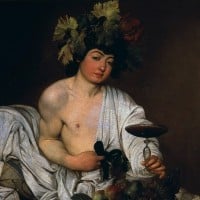 Caravaggio was an Italian Baroque painter born in 1571, known for his realistic depiction of physical and emotional states, as well as his dramatic use of light and shadow. His works, such as "Judith Beheading Holofernes," are noted for their intensity and emotional realism, often drawing on religious and mythological themes.
Caravaggio was an Italian Baroque painter born in 1571, known for his realistic depiction of physical and emotional states, as well as his dramatic use of light and shadow. His works, such as "Judith Beheading Holofernes," are noted for their intensity and emotional realism, often drawing on religious and mythological themes.
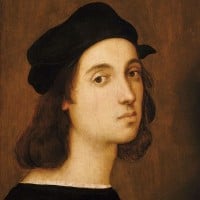 Raphael was an Italian painter and architect of the High Renaissance. Born in 1483, he is best known for his Madonnas and for his large figure compositions in the Vatican in Rome, such as "The School of Athens." His work is often cited for its clarity, ease of composition, and visual achievement of the Neoplatonic ideal.
Raphael was an Italian painter and architect of the High Renaissance. Born in 1483, he is best known for his Madonnas and for his large figure compositions in the Vatican in Rome, such as "The School of Athens." His work is often cited for its clarity, ease of composition, and visual achievement of the Neoplatonic ideal. Like she sings Tina Turner :
"Simply the best".
To be serious: there are others not less : Giorgione, Caravaggio, Leonardo, Goya, Velasquez, Michelangelo, Rembrandt, Rubens, Tiziano, Monet, Van Gogh...
And the fathers of all of them : Giotto and Masaccio.
But if I have to choose one, my vote Is for him.
Raphael use to believe as a sculptor. The profession is painter and despite being that youthful there are some real good interpretations of paintings about life and dreams. More impressive as an underdog in the study got done a lot better than would allow in imagination. Incredible!
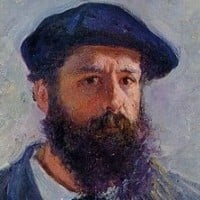 Claude Monet, a founder of French Impressionism, was born in 1840. He is perhaps best known for his series of paintings of water lilies and his work "Impression, Sunrise," from which the term "Impressionism" was derived. Monet's work focused on capturing light, atmosphere, and color.
Claude Monet, a founder of French Impressionism, was born in 1840. He is perhaps best known for his series of paintings of water lilies and his work "Impression, Sunrise," from which the term "Impressionism" was derived. Monet's work focused on capturing light, atmosphere, and color. For me, it's always been between Monet and Van Gogh. Only reason I'm voting for Monet here is because Van Gogh is already #1 and I imagine he'll stay there.
His paintings are enticingly beautiful.
Very intricate drawings about nature and beautiful environments to depict. definitely a favorite, fine drawn art with skill and perhaps mastery of the times.
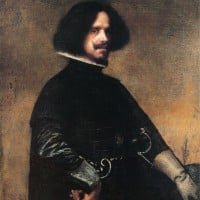 Diego Velázquez, born in 1599 in Spain, was a leading artist in the court of King Philip IV. Notable for his skillful technique and realistic portrayals, his most famous work is "Las Meninas," which has been extensively analyzed and admired for its complex spatial and psychological dimensions.
Diego Velázquez, born in 1599 in Spain, was a leading artist in the court of King Philip IV. Notable for his skillful technique and realistic portrayals, his most famous work is "Las Meninas," which has been extensively analyzed and admired for its complex spatial and psychological dimensions.
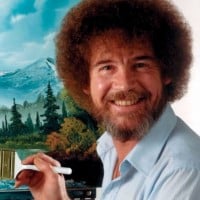 Bob Ross was an American painter born in 1942, most famous for his television series "The Joy of Painting." With his calm demeanor and iconic afro, Ross taught people how to paint landscapes in a straightforward, approachable manner. His technique, often called "wet-on-wet," allowed for quick, effective painting.
Bob Ross was an American painter born in 1942, most famous for his television series "The Joy of Painting." With his calm demeanor and iconic afro, Ross taught people how to paint landscapes in a straightforward, approachable manner. His technique, often called "wet-on-wet," allowed for quick, effective painting. His show is so soothing to watch and he paints great paintings in such a short amount of time. I just wish more kids today would find this show.
The Happy Painter. "Just add a happy ol' cloud right there..."
Paints beautiful pictures from imagination and has a lovely speaking voice.
Bob Ross was amazing at painting, sad to see him go before he had reach his time.
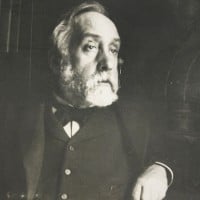 Edgar Degas was a French artist born in 1834, primarily associated with the Impressionist movement. Though he rejected the term, his works often featured scenes of Parisian life, including ballet dancers and horse races. His techniques and subject matter influenced later modern artists significantly.
Edgar Degas was a French artist born in 1834, primarily associated with the Impressionist movement. Though he rejected the term, his works often featured scenes of Parisian life, including ballet dancers and horse races. His techniques and subject matter influenced later modern artists significantly.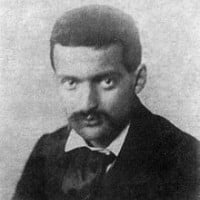 Paul Cézanne was a French Post-Impressionist painter born in 1839. Known for breaking away from Impressionism, his work laid the foundation for the transition to the 20th-century modernism in art. Famous works like "Mont Sainte-Victoire" exemplify his innovative approach to form and color.
Paul Cézanne was a French Post-Impressionist painter born in 1839. Known for breaking away from Impressionism, his work laid the foundation for the transition to the 20th-century modernism in art. Famous works like "Mont Sainte-Victoire" exemplify his innovative approach to form and color. Always will be the greatest painter, total game changer.
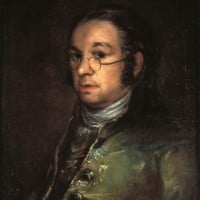 Francisco Goya, born in Spain in 1746, was both a court painter and a critic of his era. Known for his diverse subject matter, from portraits to disturbing, fantastical scenes, his notable works include "The Third of May 1808" and the "Black Paintings." Goya's works often depict the human condition in its beauty and horror.
Francisco Goya, born in Spain in 1746, was both a court painter and a critic of his era. Known for his diverse subject matter, from portraits to disturbing, fantastical scenes, his notable works include "The Third of May 1808" and the "Black Paintings." Goya's works often depict the human condition in its beauty and horror. True art communicates deeply with our feelings.
"The Dog" (a half-buried dog, lost and isolated in a hugeness environment) it's one of the saddest and most emotional masterpiece that have ever seen.
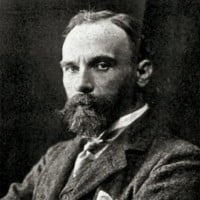 John William Waterhouse was an English painter born in 1849, known for working in the Pre-Raphaelite style. His paintings often feature women from mythology and literature, such as "The Lady of Shalott." Waterhouse's works are celebrated for their vivid detail and emotional depth.
John William Waterhouse was an English painter born in 1849, known for working in the Pre-Raphaelite style. His paintings often feature women from mythology and literature, such as "The Lady of Shalott." Waterhouse's works are celebrated for their vivid detail and emotional depth.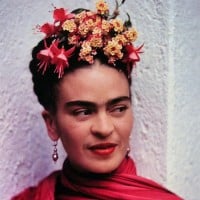 Frida Kahlo was a Mexican painter born in 1907, celebrated for her intense, emotionally raw self-portraits. She was deeply influenced by Mexican culture, and her work often features bright colors and intricate detail. Kahlo had a tumultuous life marked by physical suffering, which deeply influenced her art.
Frida Kahlo was a Mexican painter born in 1907, celebrated for her intense, emotionally raw self-portraits. She was deeply influenced by Mexican culture, and her work often features bright colors and intricate detail. Kahlo had a tumultuous life marked by physical suffering, which deeply influenced her art.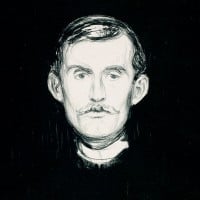 Edvard Munch was a Norwegian painter, born in 1863, most famous for his iconic painting "The Scream." Munch was a pioneer in the Symbolist and Expressionist movements, and his work often explored themes of angst, illness, and human vulnerability.
Edvard Munch was a Norwegian painter, born in 1863, most famous for his iconic painting "The Scream." Munch was a pioneer in the Symbolist and Expressionist movements, and his work often explored themes of angst, illness, and human vulnerability.
 Jean Honoré Fragonard was a French Rococo painter and printmaker born in 1732. He is best known for his hedonistic and frivolous paintings that capture the spirit of the French aristocracy, such as "The Swing." Despite his prolific output, much of Fragonard’s work was forgotten until a revival of interest in the 19th century.
Jean Honoré Fragonard was a French Rococo painter and printmaker born in 1732. He is best known for his hedonistic and frivolous paintings that capture the spirit of the French aristocracy, such as "The Swing." Despite his prolific output, much of Fragonard’s work was forgotten until a revival of interest in the 19th century.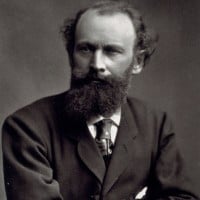 Edouard Manet was a French painter born in 1832, often associated with the Impressionist movement, though he formally distanced himself from it. His work, such as "Olympia" and "Luncheon on the Grass," challenged traditional artistic norms and paved the way for modern art. Manet’s contributions were pivotal in the transition from Realism to Impressionism.
Edouard Manet was a French painter born in 1832, often associated with the Impressionist movement, though he formally distanced himself from it. His work, such as "Olympia" and "Luncheon on the Grass," challenged traditional artistic norms and paved the way for modern art. Manet’s contributions were pivotal in the transition from Realism to Impressionism.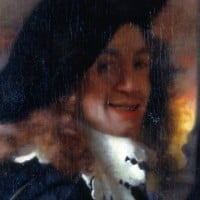 Johannes Vermeer was a 17th-century Dutch painter who specialized in domestic interior scenes. His mastery of light and color is evident in his limited body of work, most famously in "Girl with a Pearl Earring." Despite his obscurity during his lifetime, Vermeer is now regarded as one of the greatest painters of the Dutch Golden Age.
Johannes Vermeer was a 17th-century Dutch painter who specialized in domestic interior scenes. His mastery of light and color is evident in his limited body of work, most famously in "Girl with a Pearl Earring." Despite his obscurity during his lifetime, Vermeer is now regarded as one of the greatest painters of the Dutch Golden Age. Vermeer begins where Leonardo left off. No doubt, Leonardo was the most amazing human ever. He took a scientific look at what makes art function and introduced movement and storytelling to paint. However, for me, his paintings always look like his real money earner, theater and stage settings with actors "emoting". It took Vermeer to introduce living breathing people you might actually want to know, with deep emotions, in settings where you have perhaps visited. His mastery of lighting alone creates more emotion than most. Every object in his paintings have secret meanings, morals, stories you could take years to fathom. How else could someone create and entire movie based on a single picture. Truly they speak a thousand words.
 Georgia O'Keeffe was an American modernist artist born in 1887. She is best known for her paintings of magnified flowers, New York skyscrapers, and New Mexico landscapes. O'Keeffe has been recognized as the "Mother of American modernism" and has left a significant imprint on American art.
Georgia O'Keeffe was an American modernist artist born in 1887. She is best known for her paintings of magnified flowers, New York skyscrapers, and New Mexico landscapes. O'Keeffe has been recognized as the "Mother of American modernism" and has left a significant imprint on American art.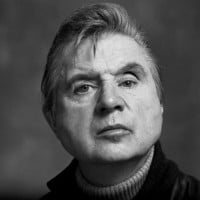 Francis Bacon was an Irish-born British figurative painter known for his emotionally intense, raw imagery. Born in 1909, he is best known for his series of screaming popes and studies of the human form in anguish. His work was influential in the development of the Existentialist movement in art.
Francis Bacon was an Irish-born British figurative painter known for his emotionally intense, raw imagery. Born in 1909, he is best known for his series of screaming popes and studies of the human form in anguish. His work was influential in the development of the Existentialist movement in art.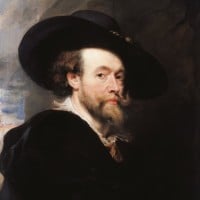 Peter Paul Rubens was a Flemish Baroque painter born in 1577. His work is characterized by an emphasis on color, sensuality, and movement. Famous works like "The Descent from the Cross" and "Massacre of the Innocents" showcase his mastery in portraying human anatomy and emotions.
Peter Paul Rubens was a Flemish Baroque painter born in 1577. His work is characterized by an emphasis on color, sensuality, and movement. Famous works like "The Descent from the Cross" and "Massacre of the Innocents" showcase his mastery in portraying human anatomy and emotions. Although most of his painting make me want to throw up, he greatly represents his era.
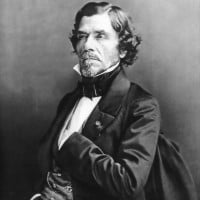 Eugène Delacroix was a French Romantic artist born in 1798. He is famous for his use of expressive brushstrokes and bold use of color, which would go on to influence the Impressionist movement. Major works include "Liberty Leading the People" and "Death of Sardanapalus."
Eugène Delacroix was a French Romantic artist born in 1798. He is famous for his use of expressive brushstrokes and bold use of color, which would go on to influence the Impressionist movement. Major works include "Liberty Leading the People" and "Death of Sardanapalus."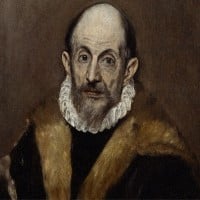 El Greco, born in 1541 in Crete, was a painter, sculptor, and architect who spent much of his career in Spain. Known for his dramatic use of color and elongated forms, his work, such as "The Burial of the Count of Orgaz," was a precursor to both Expressionism and Cubism. He had a substantial influence on 20th-century artists.
El Greco, born in 1541 in Crete, was a painter, sculptor, and architect who spent much of his career in Spain. Known for his dramatic use of color and elongated forms, his work, such as "The Burial of the Count of Orgaz," was a precursor to both Expressionism and Cubism. He had a substantial influence on 20th-century artists.